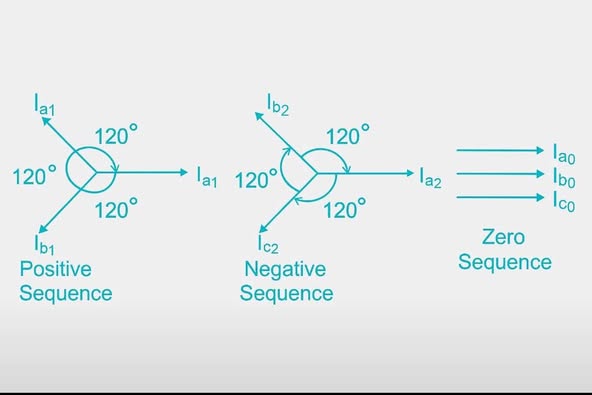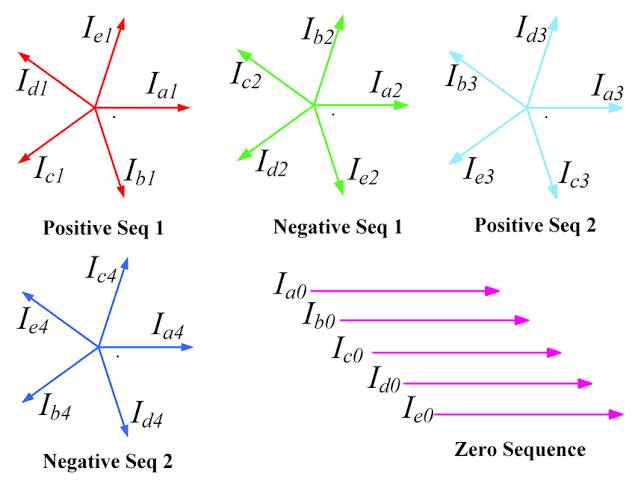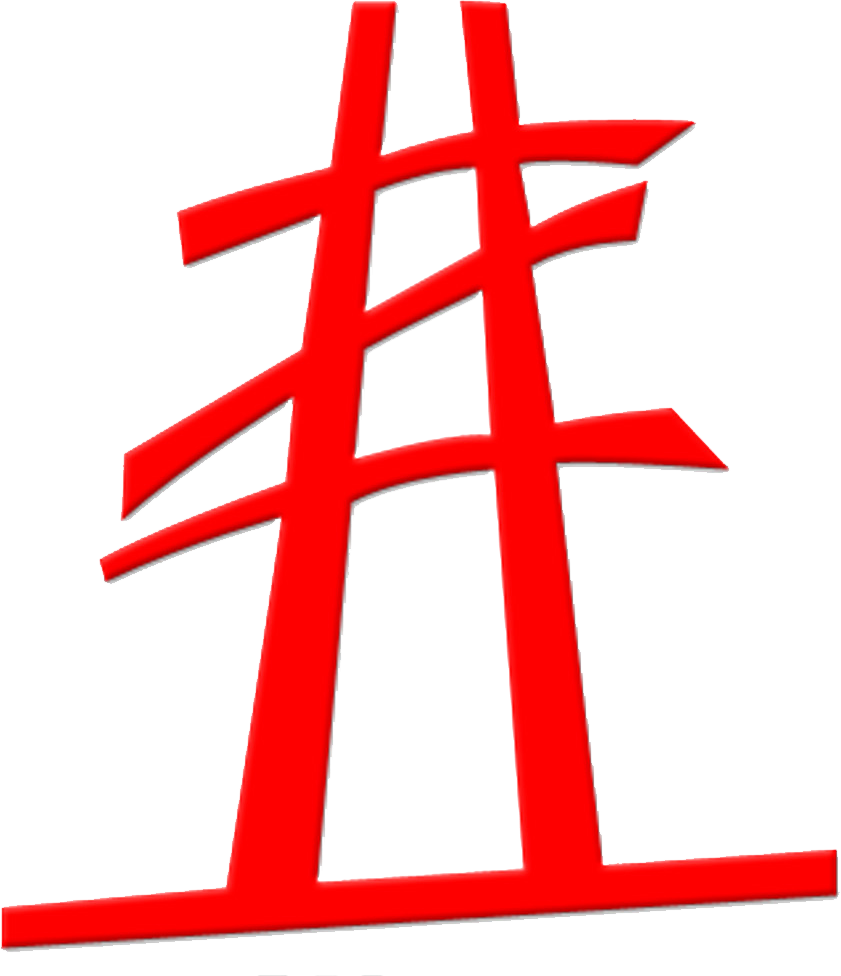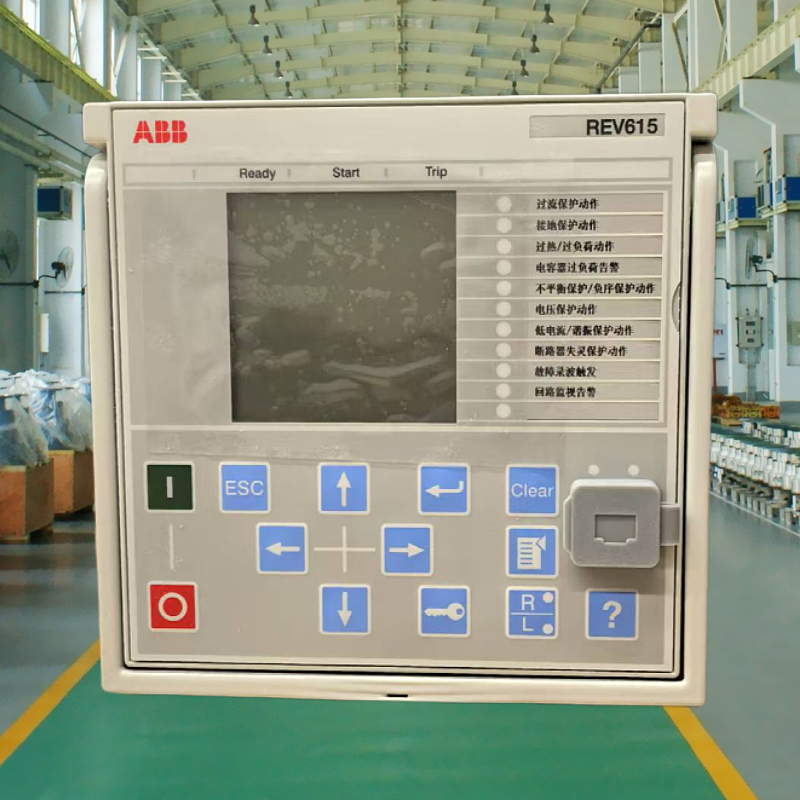In a three-phase power system, voltages and currents can become unbalanced due to faults, load imbalance, or equipment issues. To analyse such situations,
Symmetrical components are used:
1. 
Positive Sequence:
- Three equal magnitude voltages or currents.
- Separated by 120° from each other.
- Rotate in the same direction as the original system.
- Represents the normal operating condition of the power system.
Eg: In a healthy system, phase voltages Va, Vb, Vc form a balanced positive sequence.

2. Negative Sequence:
-Three equal magnitude voltages or currents.
Separated by 120, but rotate in the opposite direction of the original system.
- Produced during unbalanced faults (like line-to-line or unbalanced loads).
- Harmful to motors and generators as it causes additional heating.
Eg: A single-phase-to-ground fault will introduce negative sequence components.
3. Zero Sequence:
- Three voltages or currents are equal in magnitude and in phase (0° phase shift).
- Commonly associated with earth faults.
- Exists when a return path is present (like through neutral or ground).
Eg: Single-line-to-ground fault in a system with grounded neutral will have strong zero-sequence current.

















